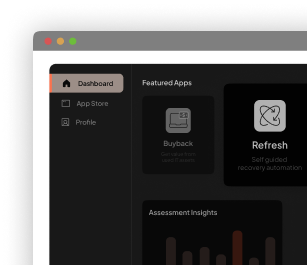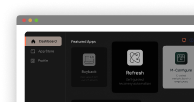Device Lifecycle Management (DLM) is the process of managing the complete lifecycle of a device, from procurement to disposal. This includes all the activities in different phases: planning, acquiring, deploying, maintaining, and retiring devices.
DLM is a crucial part of any organization’s asset management strategy, as it helps to optimize the performance and costs of devices, while also ensuring compliance with relevant regulations. Businesses of all sizes can benefit from it by properly managing IT assets and can ensure that their IT infrastructure is up-to-date, secure, and cost-effective.
As a complex process, it involves a variety of stakeholders, like procurement specialists, and finance teams, not just IT professionals. With COVID and the shift towards remote working culture, the demand and challenges have skyrocketed and the complexity in DLM has further increased.
This blog post will provide an overview of device lifecycle management, its importance, benefits, phases, and how to implement it properly in your organization in today’s world.
Importance and Benefits of Device Lifecycle Management
Device lifecycle management has fundamental importance for all types of enterprises, not just to manage mobile workforce productivity and reduce operational costs but to deliver more value to the customers.
Better Tracking: Inventory Management and Device Health
Having proper implementation for device management enables more visibility into inventory and device health. This can enable organizations to ensure that they have the right number and type of devices to meet their needs. And their devices are being used effectively and efficiently without any issues with the device’s battery life, performance, and stability.
Boost Productivity Across the Organization
Device lifecycle management can improve end-user experience and organizational productivity by ensuring devices are up-to-date, and there are no disruptions preventing users to perform their core tasks.
Take Security to the Next Level
Device lifecycle management can help organizations to ensure that their devices are properly configured and secure. This can include installing security updates and patches, as well as enforcing strong passwords and other security measures.
Mitigate Compliance Risks
Device lifecycle management can help organizations to ensure that they are complying with relevant laws and regulations, such as those related to data privacy and the disposal of end-of-life devices.
6 Common Phases of DLM
Planning
This is the initial and pre-procurement phase of DLM, where an organization determines its device needs and creates a plan for acquiring and managing these devices. This may involve conducting a device inventory, analyzing usage patterns, and setting goals for the DLM program.
Procurement
In this phase, an organization acquires the devices that it needs, either by purchasing them outright or through a leasing arrangement. This may involve evaluating different vendors, negotiating contracts, and establishing payment terms.
Deployment
After the device provisioning phase, they need to be deployed to the appropriate users, or implemented in existing systems. This may involve configuring the devices, installing the necessary software, and providing training to users.
Maintenance
This phase involves ongoing efforts to keep the devices in good working order. This may include activities such as applying software updates, repairing or replacing damaged devices, and monitoring performance.
Reporting
The reporting phase of DLM involves collecting and analyzing data about the performance, usage, location, ownership, and status of devices. This information is used to inform decision-making and improve the efficiency of the cycle and significantly improve cost savings.
Retirement
Eventually, devices will reach the end of their useful life (EOL) and need to be retired. This phase involves decommissioning the old devices and disposing of them in an appropriate manner, which may include securely wiping data and properly disposing of the device in accordance with relevant regulations.
It’s important to note that DLM is an ongoing process, and these phases may overlap and occur multiple times throughout the lifecycle of a device. And the activities are not limited to the mentioned phases but also include enrolling in Mobile device management programs, installing security software, asset recovery, responsible disposal of the hardware and data, repair and refreshing of the devices, warehousing, and so on.
Frequently Asked Questions (FAQs)
What is the Difference between Device Lifecycle Management and Mobile Device Lifecycle Management?
Both of these terms, DLM and MDLM are used interchangeably. Still, the main difference between them is Device lifecycle management covers all types of devices, including mobile devices, IoT, servers, printers, medical devices, and workstations. In contrast, mobile device lifecycle management is specific to mobile devices, tablets, and laptops.
What are the common challenges associated with DLM implementation?
- Managing a diverse fleet of devices: As mentioned earlier, organizations may have a variety of different devices, including desktops, laptops, tablets, and smartphones, each with different requirements and capabilities. Managing such a diverse fleet can be complex and time-consuming.
- Ensuring compliance with laws and regulations: Organizations must comply with various laws and regulations in the different regions they operate in, and it can be challenging to develop processes.
- Keeping up with technological change: The technology landscape is constantly evolving, and IT managers must keep up with these changes to ensure that the organization’s devices are current and effective. This can involve upgrading or replacing devices, which can be costly.
- Other common issues include but are not limited to: managing device security, maintaining budget constraints, dealing with end-of-life devices, handling hardware and software issues, and device repairs
What is IoT Device Lifecycle Management?
IoT (Internet of Things) DLM focuses on managing the various stages of an IoT device’s life. Such devices are connected to the internet and are used to collect and transmit data, often for automation and control purposes. It usually increases the complexity as data privacy and security risks increase because of the volume and sensitivity of the data IoT devices transmit.
How can device lifecycle management be improved?
- By implementing automation on various aspects such as device procurement, software updates, and maintenance and repair scheduling.
- Enhance inventory tracking and ensure everything is tracked accurately
- Implement proper device security by using strong passwords, two-factor authentication, and regular security updates.
- Regularly upgrade or replace devices: As devices age, they may become slower or less reliable. By regularly upgrading or replacing devices, organizations can ensure that their end-users have the latest technology and features at their disposal.
- Properly dispose of end-of-life devices when they reach the end of their useful life, they must be disposed of in a responsible manner. This can involve wiping devices to remove sensitive data, and disposing of devices in accordance with relevant laws and regulations.
What things to consider when choosing an MDM or DLM Solution?
When choosing a solution for your company’s devices, there are several factors that you should consider to ensure that you select the best solution for your organization’s needs:
- Compatibility: Consider the types of devices that you will be managing and ensure that the solution is compatible with these devices.
- Features: Consider the features such as device enrolment, inventory management, security policy management, and DLM/MDM software.
- Integration: Consider how easy is to configure the solution with your organization’s existing systems and processes. It’s best to choose a solution that is compatible with your existing systems and can be easily integrated into your workflow.
- Watch out for hidden costs, lack of transparency, upfront costs, subscription fees, and maintenance or support costs. Choose a solution that fits within your budget.
- Scalability shouldn’t be neglected if your organization is growing, the solution should accommodate the remote work culture, future growth, and the changes in your device fleet.
At Unduit, we offer turnkey solutions for your enterprise device management. We help Fortune 500 companies minimize the TCO on end user devices. Get in touch with us to learn more.







